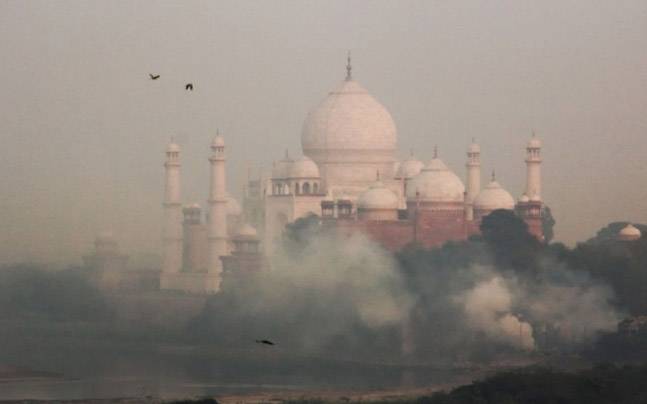A South Asia region is known to be a desirable travel destination with deep blue ocean, white sand beaches and delicious local food. Till now no one paid attention to the most needed thing for traveling and even more – for life – to air. This invisible factor was taken for granted and not evaluated. Until the moment the scientists started taking samples of air and determine its quality.
This week Greenpeace and IQAir AirVisual, a software company that tracks air quality data, released World Air quality report, determining most polluted countries and cities of the world. Unfortunately India, Bangladesh, Pakistan and China are in the top on the list.
Southeast Asia’s most polluted cities during 2018 were the capitals Jakarta and Hanoi, with a number of Thai cities also ranking highly in this region. Public awareness of local pollution levels in these countries has grown considerably during 2018, as well as in South Korea and Pakistan.
India holds 15 of the top 20 spots in the city polluted category. The Pakistani city of Lahore and Dhaka, the capital of Bangladesh, also made the top 20, making South Asia – where governments are routinely criticized for failing to limit emissions and coal use – an especially toxic region.
“At a country level, weighted by population, Bangladesh emerges as the most polluted country on average, closely followed by Pakistan and India,” the report said.
Details from the report, which looked at data from more than 3,000 cities around the world, offer more bad news for India’s nascent movement to curb air pollution. Average levels of the tiny, dangerous airborne particles known as PM 2.5, which can penetrate deep into the lungs and enter the bloodstream, were largely unchanged from 2017 to 2018 in many Indian cities featured in the report.
The report focuses on PM2.5 as a representative measure of air pollution. PM2.5 refers to particulate matter which measure up to 2.5 microns in size, and has a range of chemical makeups and sources. PM2.5 is widely regarded as the pollutant with the most health impact of all commonly measured air pollutants. Due to its small size PM2.5 is able to penetrate deep into the human respiratory system and from there to the entire body, causing a wide range of short- and long-term health effects.
Particulate matter is also the pollutant group which affects the most people globally. It can come from a range of natural as well as man-made sources. Common sources of PM include combustion (from vehicle engines, industry, wood and coal burning), as well as through other pollutants reacting in the atmosphere.
Other recent studies have cited similarly troubling statistics for India, and for other countries with severely polluted air.
Last year, a report from the United Nations Environment Program found that toxic air kills seven million people every year, with most of those deaths occurring in the Asia-Pacific region. A study released by Lancet Planetary Health in December pegged the number of deaths in India from pollution at 1.24 million in 2017.
Another recent report from Unicef, “Danger in the air: How air pollution may be affecting the brain development of young children around the world”, found that poor air quality might be permanently damaging children’s brains.
Even as apocalyptic images of smoggy Indian cities have spread on social media, officials have studiously avoided calling the pollution a health emergency.
During a string of days in 2017 when pollution levels in New Delhi, the capital, reached around 30 times the World Health Organization’s safe limit, India’s environment minister, Harsh Vardhan, went on television to say that data from international groups could not be trusted.
In January, the government unveiled the National Clean Air Program, a five-year plan to reduce air pollution in 102 cities by up to 30 percent from 2017 levels. But environmentalists said the initiative was underfunded and lacked clear mechanisms for achieving its goals.
Nandikesh Sivalingam, a campaigner for Greenpeace in India, said it was unclear whether the measure was a mere “random initiative” or something that would truly cut into pollution figures.
As India prepares for national elections, which are expected in April and May, politicians have been mostly silent about the toxic air. And many Indians see pollution as a problem confined to the capital region.
“We’re still in denial,” said Jai Dhar Gupta, the founder of Nirvana Being, an Indian company that sells pollution masks. “The priority for 99 percent of Indians is necessities: food, shelter and clothing. Health and environment are not even in the top 10.”
Like other developing countries, India has struggled to improve infrastructure and strengthen industry without battering its environment.
China, an authoritarian state, has made strides toward cleaning up its cities in part by bringing criminal charges against polluters. Among the Chinese cities featured in the report, average concentrations of PM 2.5 fell 12 percent from 2017 to 2018, with figures for Beijing, the country’s famously noxious capital, reduced more than 40 percent since 2013.
But India is a messy, inefficient multiparty democracy, and environmental rules are often ignored or go unenforced. For those reasons, Mr. Gupta said he worried that the country’s alarming pollution figures would persist unless something dramatic happened.
“In the past, tipping points have typically been millions of people dying,” he said. “I’m really saddened to say it, but I think that’s what it’s going to take.”
Furthermore real-time, public air quality information is essential not only to empower populations to respond to current conditions and protect human health, but also is a cornerstone in generating public awareness and driving action to combat air pollution in the long-term.



